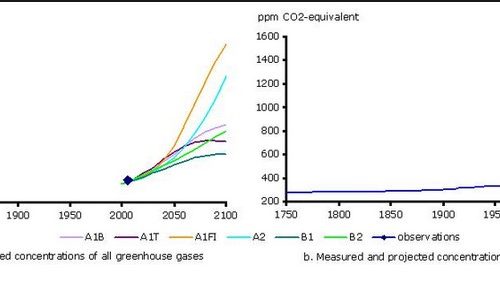
The ultimate purpose of a model is to identify the likely response of the climate system to a change in any of the parameters and processes which control the state of the system. The climate response occurs in order to restore equilibrium within the climate system. For example, the climate system may be perturbed by the radiative forcing associated with an increase in carbon dioxide (a greenhouse gas) in the atmosphere. The aim of the model is then to assess how the climate system will respond to this perturbation, in an attempt to restore equilibrium.
The nature of the model can be one of two modes. In equilibrium mode, no account is taken of the energy storage processes which control the evolution of the climate response with time. It is assumed that the climate response occurs instantaneously following the system perturbation. The inclusion of energy storage processes allows the model to be run in transient mode, simulating the development of the climate response with time. Generally, both equilibrium and transient models will be run twice, once in a control run with no forcing, then over the test run including forcing and perturbation of the climate system. (For a further discussion of the concepts of equilibrium and transient climate responses, the reader may wish to refer back to section 2.7.)
The climate sensitivity and the role of feedback are critical parameters whatever the model formulation. In the most complex models, the climate sensitivity will be calculated explicitly through simulations of the processes involved. In simpler models this factor is parameterised by reference to the range of values suggested by the more complex models. This approach, whereby more sophisticated models are nested in less complex models, is common in the field of climate modelling.




Leave a Reply